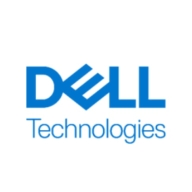

Dell XC Appliance and Red Hat Hyperconverged Infrastructure are products in the hyper-converged infrastructure market. Red Hat Hyperconverged Infrastructure appears to have the upper hand with its superior features and value, despite higher costs.
Features: Dell XC Appliance offers integration with VMware and Nutanix, flexible scalability, and robust storage options. Red Hat Hyperconverged Infrastructure includes open-source architecture, seamless Red Hat OpenShift integration, and strong security features.
Room for Improvement: Dell XC Appliance could improve its integration flexibility, enhance initial setup efficiency, and broaden its security features. Red Hat Hyperconverged Infrastructure could work on simplifying deployment, reducing setup time, and improving out-of-the-box scalability.
Ease of Deployment and Customer Service: Dell XC Appliance is known for straightforward deployment and comprehensive support, allowing minimal downtime. Red Hat Hyperconverged Infrastructure has a complex deployment process that may require additional expertise but offers solid technical support for smooth operations.
Pricing and ROI: Dell XC Appliance is cost-effective with a competitive total cost of ownership, providing attractive ROI for those focused on affordability. Red Hat Hyperconverged Infrastructure, while more expensive to set up, offers significant ROI over time from its advanced features and integration capabilities.
XC Series hyper-converged appliances integrate Dell EMC 14th generation PowerEdge servers with Nutanix software to offer one of the industry’s most versatile and scalable hyper-converged infrastructure (HCI) platforms. By supporting a choice of hypervisors, XC Series appliances can be deployed quickly for all virtualized workloads to reduce management complexity and total cost of ownership.
Red Hat Hyperconverged Infrastructure - based on our leading OpenStack and virtualization platforms - provides co-located, scalable, software-defined compute and storage, driven by Red Hat Ansible Automation on economical, industry-standard hardware.
We monitor all HCI reviews to prevent fraudulent reviews and keep review quality high. We do not post reviews by company employees or direct competitors. We validate each review for authenticity via cross-reference with LinkedIn, and personal follow-up with the reviewer when necessary.